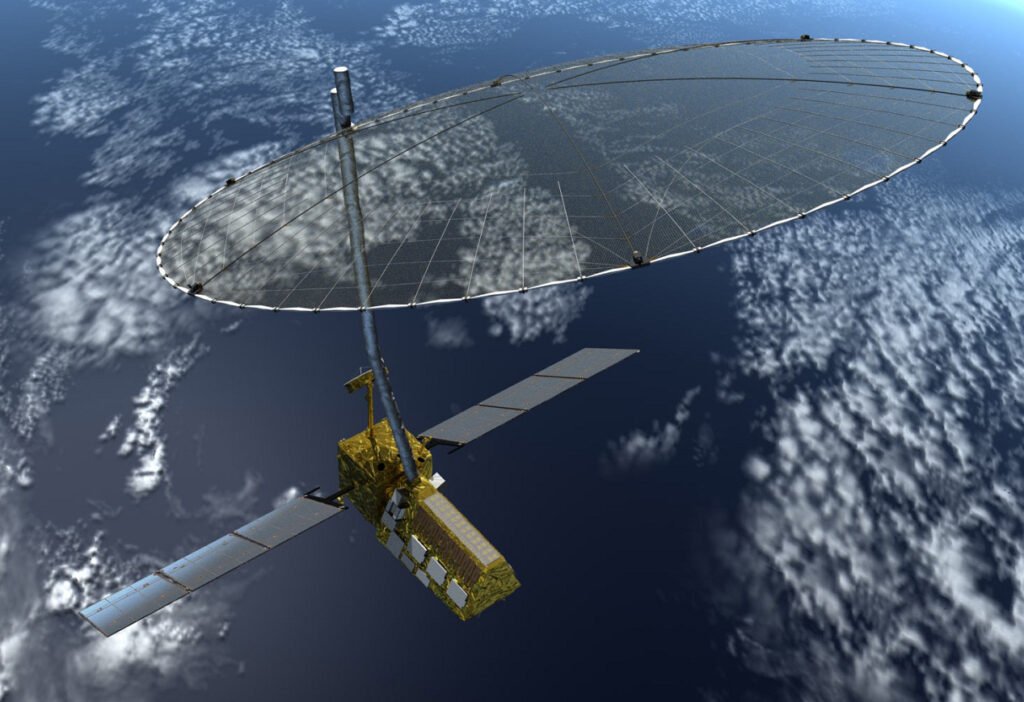NISAR mission : NASA-ISRO’s joint satellite NISAR gets a send-off before moving to India: All you need to know
NASA and ISRO have partnered to develop and launch a new satellite mission, the NASA-ISRO Synthetic Aperture Radar (NISAR), that aims to provide scientists with the most detailed view of the Earth’s surface ever created. The satellite was given an auspicious send-off by the US space agency on 16 November 2021, before it was shipped to India for final testing and launch preparations.
NISAR is the first mission of its kind to use two different radar frequencies – L-band and S-band – to observe the same location on Earth, providing a range of data about the planet’s land, ice, and oceans. The mission will help scientists to better understand the impact of climate change and natural disasters, as well as the Earth’s ecosystems and geology.
The satellite is set to be launched from India’s Satish Dhawan Space Centre in Sriharikota in the first half of 2023. The mission is a collaboration between NASA and ISRO, with the two agencies sharing responsibilities for the project. NASA is providing the L-band radar, while ISRO is providing the S-band radar and the spacecraft bus.
The NISAR mission is expected to have numerous applications, including tracking natural disasters such as earthquakes and tsunamis, monitoring agricultural production, and studying glaciers and sea ice.

Why this News is important:
- NASA-ISRO joint satellite: NASA and ISRO are working together to develop and launch a new satellite mission, NISAR. This mission is an important step towards strengthening international cooperation and collaboration in the field of space exploration.
- Detailed view of Earth’s surface: NISAR will provide scientists with the most detailed view of the Earth’s surface ever created. This will help scientists to better understand the impact of climate change, natural disasters, as well as the Earth’s ecosystems and geology.
- Unique technology: The mission is unique in that it will use two different radar frequencies – L-band and S-band – to observe the same location on Earth, providing a range of data about the planet’s land, ice, and oceans.
- Applications: The NISAR mission is expected to have numerous applications, including tracking natural disasters such as earthquakes and tsunamis, monitoring agricultural production, and studying glaciers and sea ice.
Historical context:
In recent years, space exploration has become an increasingly important area of focus for countries around the world. In 2008, India launched its first lunar mission, the Chandrayaan-1, which detected water on the moon’s surface. Since then, India has continued to develop its space capabilities, launching a number of successful missions, including the Mars Orbiter Mission in 2014.
NASA has also been at the forefront of space exploration for decades, launching numerous missions to explore our solar system and beyond. The agency has a long history of collaboration with other countries, including the International Space Station (ISS), which is a joint project between NASA, Roscosmos, the European Space Agency (ESA), and the Canadian Space Agency (CSA).
Key Takeaways from “NASA-ISRO’s joint satellite NISAR gets a send-off before moving to India: All you need to know”:
| Serial Number | Key Takeaway |
|---|---|
| 1. | NISAR is a joint mission between NASA and ISRO. |
| 2. | The mission will use two different radar frequencies to observe the same location |
Important FAQs for Students from this News
What is NISAR?
NISAR stands for NASA-ISRO Synthetic Aperture Radar. It is a joint satellite mission between NASA and ISRO that will use advanced radar imaging to observe and measure changes on the Earth’s surface.
What is the purpose of NISAR?
The purpose of NISAR is to study the Earth’s surface and to observe and measure changes in land, ice, and water surfaces. This information will be used for various applications such as mapping of the Earth’s surface, tracking of natural disasters, and monitoring of climate change.
When will NISAR be launched?
NISAR is scheduled to be launched in 2023 from India’s Satish Dhawan Space Centre.
What is the significance of the joint collaboration between NASA and ISRO for NISAR?
The joint collaboration between NASA and ISRO for NISAR is significant as it combines the expertise and resources of two of the world’s leading space agencies. It will also provide an opportunity for India to develop its capabilities in the field of advanced radar imaging.
Some Important Current Affairs Links


















 Exciting News!
Exciting News!  Join Our Telegram Channel Now!
Join Our Telegram Channel Now!
 Join our Telegram channel for a thrilling adventure into the world of daily current affairs.
Join our Telegram channel for a thrilling adventure into the world of daily current affairs. 
 Don’t miss out on the latest updates and insights! Click to join now and be part of the knowledge revolution!
Don’t miss out on the latest updates and insights! Click to join now and be part of the knowledge revolution! 
